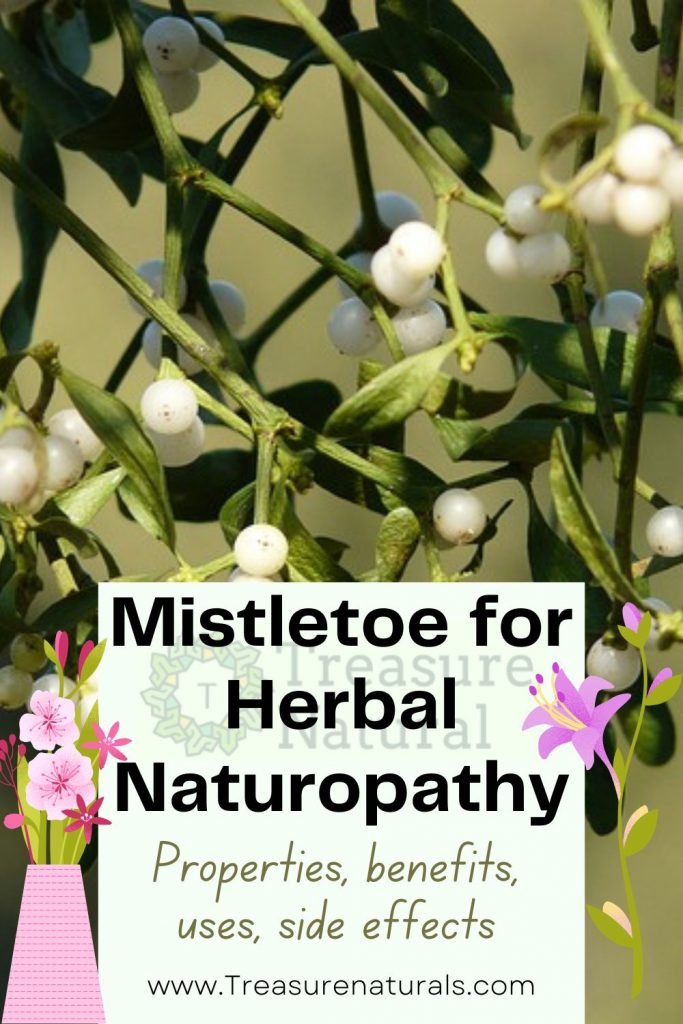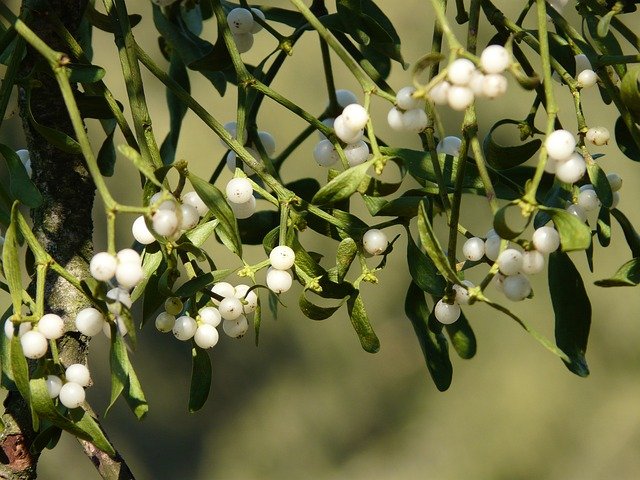
Mistletoe is a rather versatile medicinal plant in the therapeutic field, because it is useful in case of hypertension and gastrointestinal problems, but also an immunotherapeutic agent against cancer. Let’s find out better.
Properties and benefits of Mistletoe
Mistletoe is a pinata with important therapeutic properties, among which the best known is the antitumor one . This plant, in fact, would have the ability to act as an immunotherapeutic agent against cancer.
However, mistletoe is also known for the effects it has on the regulation of the circulatory system .
Mistletoe is useful against arterial hypertension, because it is able to improve the blood supply of the brain and heart and stimulates diuresis .
Mistletoe is also useful for relieving gastrointestinal problems, reducing stress, and resolving cases of respiratory ailments. It has sedative properties, because it calms palpitations and nervousness.
Mistletoe is considered a good remedy for arteriosclerosis, because it manages to stem the formation of atherosclerotic plaques, which can narrow or clog the arteries. Therefore it is indicated in patients who have had thrombosis or cerebral embolisms to prevent other episodes.
Mistletoe carries out a haemostatic action useful in case of cycle irregularities, heavy menstruation and uterine bleeding.
Mistletoe has an anti-inflammatory action useful for reducing rheumatic pains and against sciatica. The plant also contains many substances useful for health, such as mucilage, amines, tannins, antioxidants and caffeic acid.
How to use
Both the berries and the branches of the young plant are used from the mistletoe to obtain herbal teas or bud extractives.
- Prepare the mistletoe herbal tea by boiling a cup of water to which a teaspoon of medicinal herb will then be added. Keep the cup covered, leaving it to infuse for about 10 minutes, then filter and mix hot. It is possible to consume 2-3 cups a day, between meals, avoiding exceeding the recommended dose.
- Viscum album MG is the bud extract, to be taken 1 to 3 times a day in a dose of 30-50 drops diluted in a little water.
Contraindications of Mistletoe
Mistletoe has some contraindications both in case of any ascertained hypersensitivity to some components of the plant and when taking anticoagulants, immunosuppressants and antidepressants. It is therefore advisable to consult a doctor before taking this product.
In addition, the mistletoe also has a certain toxicity, so the doses must always be controlled, taking into account that the berries are more toxic than the leaves and stems. The berries, in fact, if ingested in abundance, can cause vomiting and diarrhea.
Description of the plant
Mistletoe ( Viscum album ) is a parasitic plant belonging to the Loranthaceae family. This plant grows on other trees (especially broad-leaved trees such as oak) by clinging to their branches, invading their bark and absorbing the nutrients of the host plant.
In this way the mistletoe seriously damages the plant causing deformities in its structure. Mistletoe is characterized by oblong and leathery leaves about 2 cm wide placed two by two along the branch. Mistletoe has yellow flowers and fruits with translucent white or yellowish spherical berries with a gelatinous and sticky interior.
Habitat of the Mistletoe
Mistletoe is common in the hills up to an altitude of 1100-1300 m. It grows on the woody branches of several species of Quercus, Castanea sativa and Olea europea. Widely widespread, it can be found from Portugal to Iran, from the Scandinavian Peninsula to Sicily.
Background

According to a Celtic legend, mistletoe kept away misfortunes and diseases. Even today it is considered a symbol of good luck during the Christmas period and in fact it is common to greet the arrival of the new year by kissing under one of its branches.






